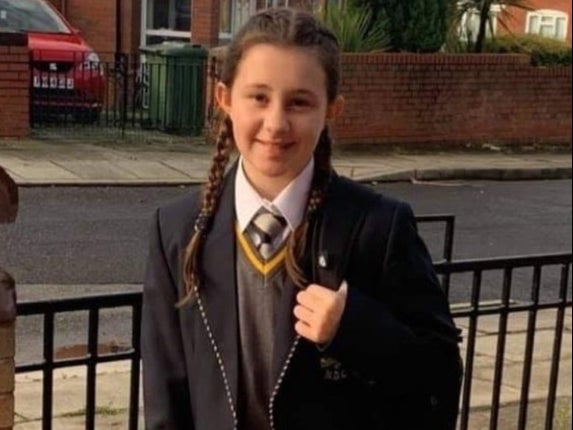We must address the root causes of knife crime to prevent tragedies like Ava White’s death
We need to examine what is driving the long-term rise in the use of weapons, particularly by young people


Knife crime is yet again in the headlines, as the 14-year-old boy remanded in custody for the murder of Ava White has been charged with possession of a “bladed article”.
Away from the headlines, the Office for National Statistics has released new data on crime involving knives. This reveals something of a mixed picture, as when comparing April 2020-March 2021 with April 2019-March 2020, almost all recorded crime involving knives, from homicide to robbery, has fallen. The exception is threats to kill involving a knife, which has jumped by 8 per cent, from 4630 to 4984 recorded incidents.
This overall drop in knife crime might seem reassuring, until you look at the longer-term trends. The rise of 8 per cent in recorded threats to kill involving a knife is dwarfed by a 265 per cent increase in the last decade, from 1366 incidents in 2010, compared to 4984 in 2021.
Just as alarming is the significant rise in reports of knifes being used in instances of rape or sexual assault. These have increased by 140 per cent and 151 per cent respectively over the last decade.
Contrary to popular perception, it isn’t London that takes the unenviable mantle of being the top of the knife crime table. It’s actually the West Midlands, where 155 offences were recorded per hundred thousand people, compared to 113 per hundred thousand in the capital. However, it’s difficult to know how variations in recording practices and targeted police activity influence this data.
We need to examine what is driving the long-term rise in the use of weapons, particularly by young people. It’s one thing to have information, it’s quite another to know what to do with it, as many high-profile public figures have found, including Metropolitan Police Commissioner Cressida Dick and Sadiq Khan, the current mayor of London. The murder of Ava White is not a one off event, as homicides involving 16 to 24-year-olds have risen by 60 per cent in the last decade.
When looking for explanations, it’s all too easy to point to the parallel rise of social media. Vice recently blamed Snapchat for the “epidemic in teen murder”. It’s understandable why this connection is made, as there is evidence that young children – mainly boys – now parade their weapons via virtual forums that can also be used to threaten and provide lurid details of how to effectively injure someone with a knife. But only the most suggestible would be motivated to take the leap from watching these images and conversations to actually using a weapon on another human being.
I fear that the rise in knife crime, as with so many other ills in our society, has little to do with the big, bad social media companies and everything to do with deeper structural problems in our communities. Too many young children are nurtured by peers, rather than by their parents or carers, whose aim is to exploit, as we’ve witnessed with county lines drug dealing – a business model that needs a constant supply of children to be effective.
To keep up to speed with all the latest opinions and comment sign up to our free weekly Voices Dispatches newsletter by clicking here
As we’ve learnt with drugs, bearing down on those who supply and distribute substances like heroin and cocaine does little more than dent this profitable trade. Yet politicians and senior police figures can’t seem to avoid the tough rhetoric that has no evidential basis, but does provide us with what we want to hear as we are, once again, shocked by another knife victim and perpetrator – both of whom are children.
It’s much harder to fix the foundations of this problem than paper over the cracks in the walls. Poverty, inadequate housing, poor education and unemployment creates the deadliest state – a lack of hope. The state has subcontracted its responsibility to provide hope to young people living in the most deprived areas, leaving others to step in who have no desire to nurture these individuals, other than for their own profit.
As the story of Ava White’s tragic murder evaporates from the headlines, there are no quick fixes. We need long-term solutions – something this government is incapable of contemplating.
Ian Hamilton is a senior lecturer in addiction and mental health at the University of York
Join our commenting forum
Join thought-provoking conversations, follow other Independent readers and see their replies
Comments
Bookmark popover
Removed from bookmarks